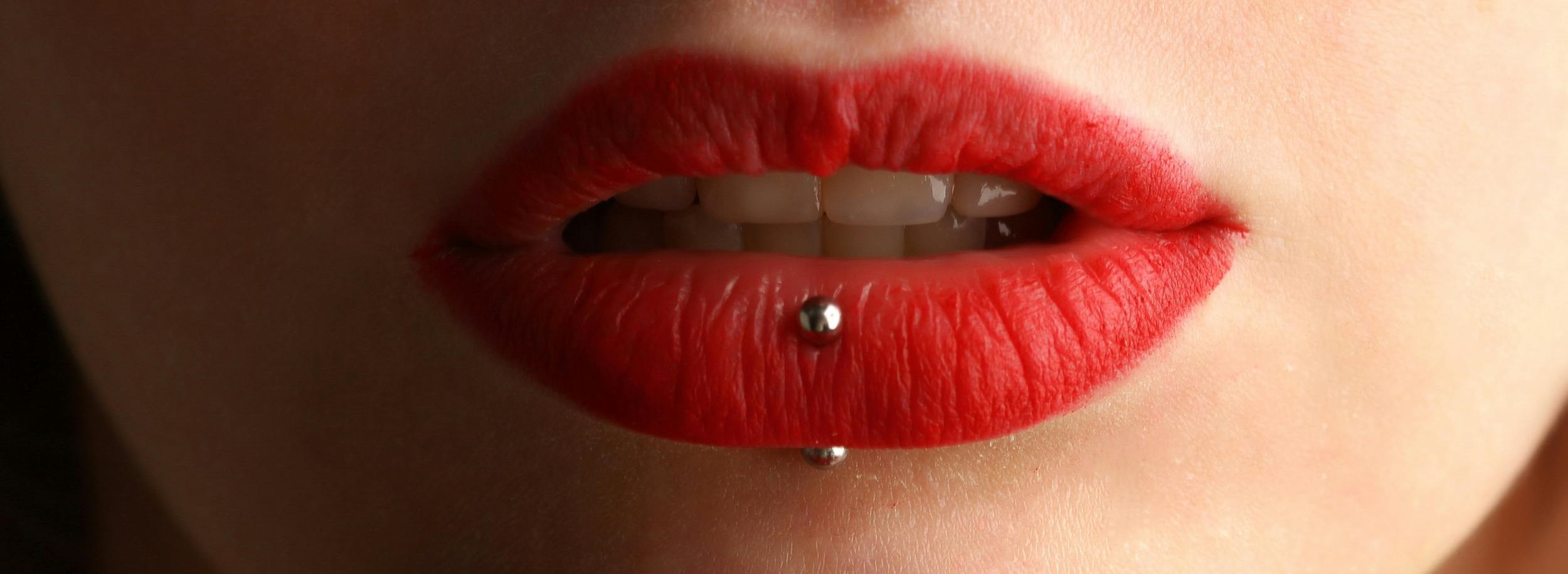
23 Sep How to Care for Oral Piercings
Oral piercings, such as tongue, lip, or cheek piercings, are a popular way to express personal style. They add a unique element to your appearance, but it’s important to remember they also require a lot of care. Unlike piercings on other parts of your body, oral piercings are constantly exposed to bacteria and food particles, which can make healing more complicated. By taking proper care of your oral piercing, you can minimize the risk of complications, protect your teeth, and keep everything clean and healthy. In this post, we’ll explore four key points on how to care for your oral piercings. Each point is based on expert advice, and you’ll find the source link with each section for more detailed information.
Clean Your Piercing Regularly
Cleaning your oral piercing regularly is essential to prevent infection and ensure it heals properly. Since your mouth contains a lot of bacteria, a new piercing can become infected if not kept clean. Regular cleaning removes bacteria and food particles that can get stuck around the jewelry.
Ideally, you should clean your piercing at least twice a day, especially after eating. Using a saline solution or an alcohol-free mouthwash is the best way to go. Saline solutions are gentle but effective at cleaning without causing irritation. If you don’t have a saline solution, you can make one by mixing 1/8 teaspoon of non-iodized sea salt with one cup of warm distilled water. Swish this solution around your mouth for about 30 seconds, then spit it out. Make sure to rinse your mouth thoroughly after meals to remove any food particles that could get trapped in the piercing site.
When it comes to cleaning your piercing, be sure to wash your hands before touching the jewelry. Touching your piercing with dirty hands introduces even more bacteria to the area, increasing the risk of infection. It’s also important to avoid over-cleaning the piercing, as this can irritate the skin and slow down the healing process. A twice-daily routine is usually enough to keep things clean and healthy.
In addition to cleaning, consider switching to a toothbrush with soft bristles to avoid irritating the area around your piercing. Be gentle while brushing your teeth and tongue, as being too rough can cause damage or irritation. Make cleaning your piercing a regular part of your oral hygiene routine, and you’ll be well on your way to a healthy healing process.
Watch What You Eat After Piercing
The first few days after getting an oral piercing are critical for healing, and what you eat plays a big role. During the initial healing period, your mouth will be tender, and you may experience swelling around the piercing site. To avoid irritating the piercing or causing additional pain, it’s best to stick to soft foods for the first few days. Soft foods are easy to chew and won’t disrupt the healing process as much as harder or crunchy foods might.
Some great options include yogurt, smoothies, applesauce, mashed potatoes, and broth-based soups. These foods are not only easy to eat but also reduce the chance of getting food stuck around the piercing. Try to avoid spicy, hot, or acidic foods during this time, as they can irritate the piercing and cause more pain or swelling. Hot temperatures can also aggravate the area, so lukewarm or cold foods are a safer choice for the first week or so.
In addition to watching the types of food you eat, you’ll also want to be mindful of how you’re eating. Eating too quickly or taking large bites can cause damage to the piercing, especially if you’re still adjusting to having jewelry in your mouth. Take small bites and chew slowly to avoid accidentally biting down on your piercing, which can be painful and damaging to both your piercing and your teeth.
After the first few days, as the swelling starts to go down, you can gradually reintroduce more solid foods. However, be careful with foods that have a rough texture, like chips or hard candy, as they can still pose a risk. By being mindful of what you eat during the healing process, you can prevent irritation and help your piercing heal more smoothly.
Avoid Playing with Your Piercing
It’s natural to want to touch or play with your new piercing, especially when you’re getting used to having something new in your mouth. However, constantly playing with your oral piercing is one of the quickest ways to cause problems. Repeatedly touching or moving the piercing with your tongue can irritate the area, slow down the healing process, and increase the risk of infection.
When you move or play with the piercing, you’re introducing bacteria into the wound. Even if you’ve just cleaned the area, bacteria can still find their way in, especially if you’re not washing your hands before touching the piercing. This constant irritation can also cause the piercing to take longer to heal, leading to swelling, redness, and discomfort.
Over time, the jewelry can rub against your teeth and wear away the enamel, which can lead to sensitivity or even tooth decay. In some cases, the jewelry can chip or crack your teeth if you accidentally bite down on it. This is especially true for people with tongue piercings, as it’s easy to develop the habit of tapping the jewelry against your teeth.
Your gums can also suffer from constant contact with the jewelry. If the piercing rubs against your gums too much, it can cause gum recession, which is when the gum tissue wears away and exposes the roots of your teeth. Gum recession is a serious issue because it can lead to tooth sensitivity, decay, and even tooth loss if left untreated.
The best way to avoid these issues is to leave your piercing alone as much as possible, especially during the healing process. Resist the urge to touch or play with it, and if you feel any discomfort, consult with your piercer to ensure everything is healing properly.
Regularly Check Your Jewelry for Tightness
Oral piercings can sometimes become loose over time, which can lead to a host of problems. It’s important to regularly check the tightness of your jewelry to avoid accidents. A loose piece of jewelry can fall out, and if it’s in your mouth, you risk swallowing or choking on it. This can be dangerous, especially if the jewelry makes its way into your airway or digestive system.
To prevent this, make it a habit to check the tightness of your jewelry regularly. You don’t have to check it every day, but at least once a week is a good idea. Be gentle when checking the jewelry, especially if your piercing is still healing. If you notice that the jewelry is loose, tighten it carefully by turning the ball or the backing. If you’re unsure how to do this, or if you’re concerned about the tightness, it’s a good idea to visit your piercer for help.
In addition to checking for tightness, be aware of any signs that your jewelry may need to be replaced. Over time, the metal in the jewelry can become worn or damaged, which could pose a safety risk. If you notice any sharp edges or discoloration in the jewelry, it’s a good idea to have it replaced with a new piece. Regular maintenance ensures that your jewelry stays secure and that your piercing remains healthy and safe.
Conclusion
Oral piercings can be a fun way to express yourself, but they come with the responsibility of proper care. Cleaning your piercing, watching what you eat, avoiding unnecessary movement, and regularly checking your jewelry are all important steps in maintaining a healthy piercing. By following these tips, you’ll reduce the risk of infection, protect your teeth and gums, and enjoy your piercing for years to come. Always consult with your piercer or dentist if you have any concerns, and keep up with your oral hygiene to ensure a smooth healing process.
Knoxville Family Dental is your home for dental care with your best interests in mind. Schedule an appointment with us today!

About Our Team
Our team of dental experts have over 30 years of experience in the field of dentistry, and we’re passionate about educating our patients.

Sorry, the comment form is closed at this time.